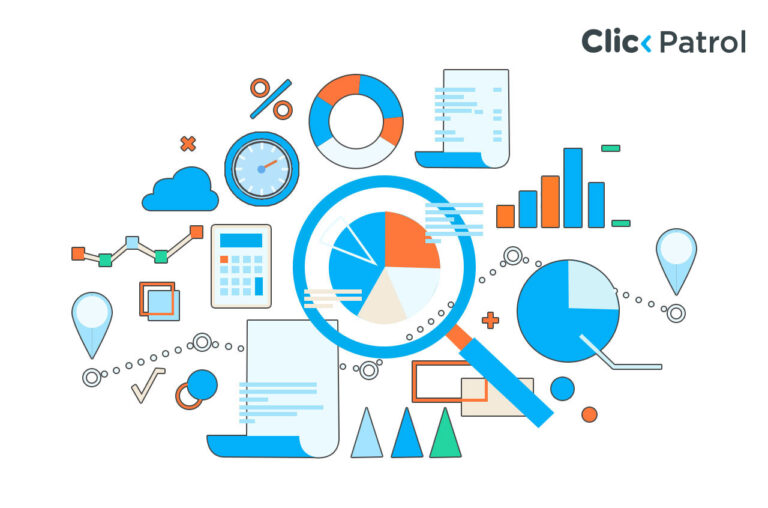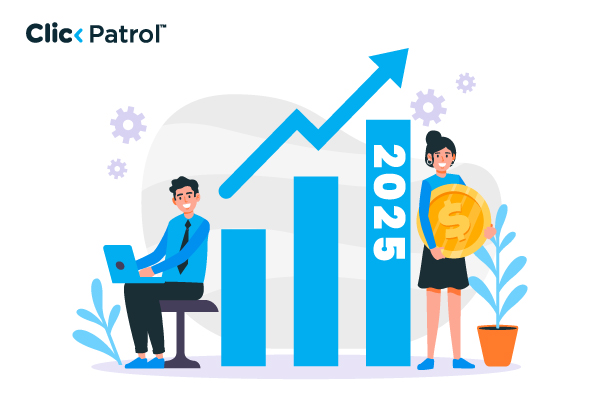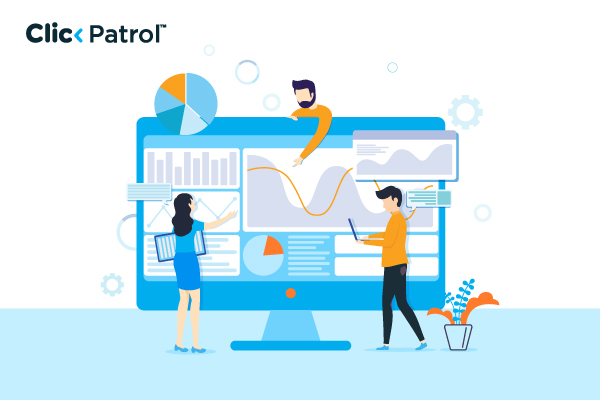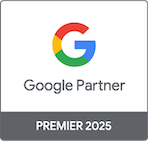
Top Google Ads competitors in 2025: Best PPC alternatives to diversify your advertising strategy
Abisola Tanzako | Jul 21, 2025

Table of Contents
- Why explore Google Ads competitors?
- Comparison of the top Google Ads competitors in 2025: Google Ads vs competitors (Pricing, audience, use case)
- 1. Microsoft Ads: A cost-effective Google Ads competitors for B2B
- 2. Amazon advertising
- 3. Meta Ads (Facebook and Instagram)
- 4. TikTok Ads
- 5. LinkedIn Ads
- 6. Other notable platforms
- Benefits of diversifying your PPC strategy
- How to choose the right Google Ads competitors
- Diversifying PPC strategies for maximum ROI
- FAQs
In 2025, over 58% of advertisers plan to diversify their PPC strategies beyond Google Ads (eMarketer).
PPC advertising is crucial for companies seeking to reach their target audiences and drive more conversions. Google Ads, previously known as Google AdWords, has consistently been the most significant player in search advertising worldwide.
According to Statista’s projections, Google is expected to capture 70% of traditional search advertising spending in the US in 2026, a figure ten times larger than Microsoft’s.
This article compares key PPC platforms, their unique strengths, and how they fit various marketing goals.
Why explore Google Ads competitors?
Google Ads competitors enable advertisers to target a massive audience by processing more than 8.3 billion daily searches, giving it an 81.95% market share worldwide.
However, being so popular leads to specific difficulties: Advertisers must spend extra for every click, encounter fierce disputes for preferred search terms, and find the rules difficult to grasp upfront.
In contrast to Google Ads, others may offer a lower price per click, various ways to find your audience, and traits that meet the needs of specific businesses.
For instance, the target audiences for Microsoft Ads and Amazon Ads differ from those of Meta Ads and TikTok Ads, which cater more to younger audiences.
Comparison of the top Google Ads competitors in 2025: Google Ads vs competitors (Pricing, audience, use case)
Here’s a detailed view of Google Ads competitors, their benefits, and how they measure up in terms of audience size, pricing, and features.
1. Microsoft Ads: A cost-effective Google Ads competitors for B2B
Microsoft Advertising, formerly known as Bing Ads, is one of Google Ads competitors. It powers its advertising model through the Bing search engine, which commands a 10.51% global market share in search.
Key features:
- Lower CPCs: Microsoft Advertising’s costs per click are typically lower than those of Google Ads, which attract advertisers seeking to minimize their click costs.
- Demographic targeting: At Bing, 38% of users are aged 45 to 64, and many have a high income, so it is popular with marketers selling to B2B and businesses targeting pricier goods.
- Integration features for LinkedIn: Because Microsoft owns LinkedIn, advertisers can use information about people’s careers from the platform, which Google Ads does not have.
- Import from Google Ads: You can easily move your Google Ads campaigns into Microsoft Advertising and speed up the setup process.
- Best suited for: Older demographics, B2B sectors, and individuals seeking more affordable PPC solutions are the types of businesses that utilize Bing Ads.
- Challenges: Bing’s limited traffic translates into fewer impressions or clicks, which may hinder the expansion of advertising for large budgets.
2. Amazon advertising
Amazon Ads has become one of the top advertising tools for online retailers, thanks in part to the platform’s 2 billion monthly shoppers.
Because Amazon handles $138.9 billion in worldwide e-commerce sales, it matters significantly for product-based businesses.
Key features:
- Product-focused Ads: With sponsored products, sponsored brands, and display ads, businesses can place their ads on Amazon, targeting users most likely to make a purchase.
- Targeting: Uses keyword and behavioral data to drive better sales growth than Google Ads in retail.
- Cost efficiency: Niche products enjoy lower CPCs, especially with less competitive keywords.
- Amazon DSP: Enables programmatic ads on Amazon and partner sites, with advanced targeting.
- Best suited for: E-commerce sellers seeking to connect with buyers at the point of purchase.
- Challenge: Not suitable for most service-based businesses.
3. Meta Ads (Facebook and Instagram)
With nearly 3 billion monthly users, Meta Ads provide extensive reach, particularly for targeting Gen Z and millennials.
Key features:
- Individually targeting relevant audiences: Meta’s advertising platform relies on data about age, interests, and behaviors to reach Gen Z and millennials, since social media ads influence 58% of U.S. millennials.
- Visual variety: Instagram supports Stories, carousels, and short videos for high-impact visuals.
- Affordable CPC: Average cost per click ranges from $0.50 to $2.00, making it more cost-effective than Google Ads.
- Retargeting: Pixel-based retargeting re-engages users who’ve interacted with your brand.
- Best for: B2C brands, young audiences, and businesses focused on brand awareness.
- Challenge: Users may not actively search, resulting in traffic that lacks immediate intent.
4. TikTok Ads
With over 825 million downloads in early 2024, TikTok is the world’s most popular app, ideal for reaching Gen Z through short, engaging videos.
Key features:
- Viral potential: The algorithm boosts engaging content; 67% of users (18–24 years old) use it to discover local businesses.
- Ad formats: In-feed ads, branded hashtags, and spark ads blend naturally into users’ feeds.
- Budget-friendly: Offers broad reach and brand awareness at a lower cost than Google Ads.
- Smart targeting: AI-based delivery optimizes user experiences for enhanced engagement.
- Best suited for: Gen Z and millennial-focused brands, or those seeking to drive creative video engagement.
- Challenge: This may not be suitable for businesses targeting older or professional audiences.
5. LinkedIn Ads
LinkedIn is ideal for B2B marketing, offering access to over 1 billion professionals, particularly those in tech, finance, and consulting, who are key decision-makers.
Key features:
- Professional targeting: Focused on job titles, industries, and company size, perfect for reaching business professionals.
- Lead generation forms: Easy-to-use forms help convert leads; 66% of business buyers research products here.
- Ad types: Sponsored content and InMail boost engagement with personalized messages.
- ROI: Delivers more substantial returns than Google Ads for high-value B2B services.
- Best for: B2B brands, recruiters, and professional service providers.
- Drawback: High CPC ($5–$9) may limit small business budgets.
6. Other notable platforms
- Twitter Ads: Ideal for real-time engagement, particularly effective for news and event campaigns.
- Pinterest Ads are effective for lifestyle, home décor, and fashion brands. 76% of users purchase after seeing an ad.
- YouTube Ads: Google’s targeting delivers video ads, which are excellent for brand awareness due to their vast global reach.
Benefits of diversifying your PPC strategy
They include:
- Cost efficiency: For most businesses, platforms such as Microsoft Advertising and TikTok Ads offer more affordable CPCs, enabling them to use their funds more efficiently.
- Niche targeting: Amazon and LinkedIn Ads excel at delivering messages that interest specific groups, such as individuals who shop or work.
- Reduced competition: Placing ads on Bing or Pinterest provides more opportunities, as there is less competition for space.
- Platform-specific features: Every platform offers something unique, and utilizing TikTok’s challenges and Amazon’s DSP can enhance your ads’ results.
- Shielded against changes in techniques and engine updates: When companies depend entirely on Google Ads, they are vulnerable to risks from changes in the advertising algorithms, which happened 36 times from 2018 to 2023. Having multiple stocks reduces the amount of risk you face.
How to choose the right Google Ads competitors
They include:
- Set your goals: Is increasing brand awareness, gathering leads, or making straight sales more important? You can rely on TikTok to spread awareness, even if you get sales from Amazon.
- Identifying your audience: Select platforms that effectively reach your target audience. If you are part of Gen Z, TikTok is the right choice, but LinkedIn cannot be beaten if you are a professional.
- Budget considerations: Start your ads with Microsoft Advertising or Meta Ads to keep costs low.
- Explore and refine your campaign by conducting similar small campaigns across platforms, allowing you to measure CTR, conversion rate, and ROI.
Diversifying PPC strategies for maximum ROI
While Google Ads is the most popular option for PPC advertising, others can help you improve your marketing strategy.
Microsoft Advertising provides access to professionals at a low cost, Amazon Ads attracts shoppers with shopping intentions, and Meta and TikTok enable you to connect with younger audiences through creative options.
Learning what each platform is best at enables a company to develop a sound strategy that will help it generate more profit and attract new customers.
The primary way to maximize the benefits of PPC in 2025 is to integrate Google Ads with other complementary platforms effectively. Try different digital marketing methods, assess their impact, and adjust your approach to stay informed in this field.
FAQs
Q.1 Why are businesses considering Google Ads competitors?
Some networks give you cheaper ways to bid, a chance to reach niche markets, and access specific platform features. Microsoft ad prices can be 60% lower than Google’s, and LinkedIn is your top choice for targeting B2B buyers on Forbes.
Q. 2 What is the most appropriate platform for e-commerce businesses?
Amazon Ads is ideal for e-commerce, with over 2 billion monthly shoppers and purchase intent, according to Statista, driving $138.9 billion in revenue.
Q. 3 Are social media advertising platforms like Meta and TikTok good?
Meta Ads reaches 3 billion individuals, and social advertisements have impacted 58% of U.S. millennials on the platform. TikTok’s 825.5 million downloads and viral ad formats are ideal for engaging Gen Z.





